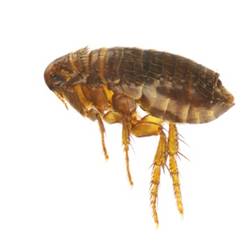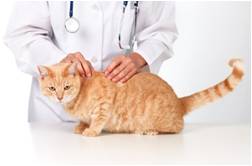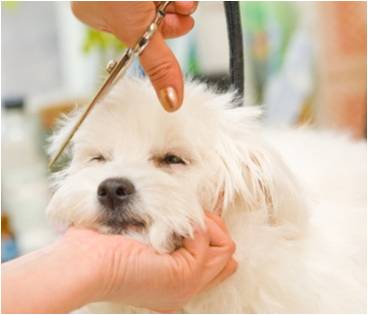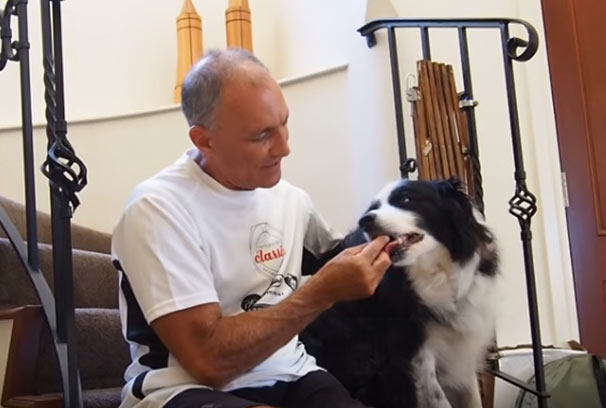Controlling & protecting against fleas

Fleas cause all sorts of problems for our dogs and cats and, to make things worse, they can affect us humans as well. Because these nasty little parasites are so common, particularly at this time of year, we’ve compiled this guide help you understand your flea problem, suggest the right tools for the job, and give you the tips you need to nip fleas in the bud properly, the first time.

Let’s first take a look at just what fleas are and why they’re such a nuisance. It’s not just cats and dogs that can become infested with fleas. In fact, your pet can acquire fleas from a variety of different sources. They can be picked up by encounters with dead animals, wild animals or even more worryingly, from your pet’s everyday outdoor environment.
Fleas jump from one host to the other, so your dog or cat needs to come into close contact with an infested animal to pick them up. That’s the good news. The bad news is that once infested, some pets can suffer from severe itching all over their body, even if they’ve only got one flea.
Flea bites can lead to inflammation, severe itching and pain, and even substantial hair loss. To understand how to best combat fleas, it’s a good idea to first understand these tiny but mighty enemies.
Know your enemy: the ins and outs of the flea’s lifecycle
Fleas aren’t born as pint-sized terrors; they go through a specific lifecycle. There are four distinct stages:
- Flea egg
- Larva
- Cocoon
- Adult flea

The adult female flea will feast on the affected animal’s blood and lay roughly thirty eggs a day for several weeks. This means that many hundreds of eggs can be produced before the flea dies. The eggs are absolutely tiny—about one twelfth the size of a flea—and fall off the host animal, landing in cracks in the floor, bedding, the carpet and anywhere else your pet spends its day.
Once the eggs hatch, they become flea larvae; little worm-like creatures that will survive on adult flea droppings or just about anything else they can find. As the larvae feed and mature, they form a cocoon and wait until the time is right to emerge as adults.
Adult fleas will break free of their cocoons and jump on the nearest host animal when they detect movement, body heat or carbon dioxide nearby.
When your dog or cat has a flea infestation, the numbers of fleas increase rapidly. If left to continue, flea problems can quickly escalate beyond control.
How do I know if my dog or cat has fleas?
Your vet can quickly tell you if your pet has a flea infestation. But, if you’re after a quick and easy DIY solution, there is a simple test you can conduct at home.
The flea detection test is a simple method for determining if your pet has a flea problem. It’s a good idea to conduct this test if you’ve noticed fierce scratching or sudden biting of a particular area.
- Take a blank piece of A4 paper or an open napkin or serviette
- Hold open the paper just below your pet’s rear
- Ruffle the fur above so that bits of dirt fall onto the piece of paper
- Put the paper to the side and wait
If after a few moments the specks of dirt begin to form a red blotchy pattern, your pet is suffering from a flea infestation. The specks of dirt you collected from your pet’s coat are in actual fact flea droppings comprised of blood and other substances.
How do I get rid of fleas?
It’s time to wipe out your flea problem—once and for all. But this isn’t as easy as treating the fleas already attacking your dog or cat. Fleas will be present all over the house; wherever your infected pet has been, there’s sure to be eggs or larvae close by.
Effective flea treatment requires a two-step approach.
Step 1: Get rid of the fleas on your dog or cat
The first step is to treat your pet with the appropriate medication.
Chemical treatment is the most popular choice and has proven most effective. Products such as Revolution, Frontline and Advantage are all good flea killers and are easy to get a hold when they’re needed. These products are topical solutions that are applied to the dog or cat’s skin.
Once applied, the medication is absorbed by the animal’s skin, killing off any fleas that are present within 24 hours after a bite.
There are a number of non-chemical medications on the market, however there has been very little credible research done regarding their effectiveness.
Step 2: Get rid of the fleas in your pet’s environment
Remember that fleas, eggs and larvae are likely to be all over the house. So, it’s definitely a good idea to treat your pet and your home at the same time, killing off all the fleas in one devastating hit.

Firstly, we suggest getting a hold of a powerful vacuum cleaner and doing a thorough clean of the entire house. It’s especially important to get into your pet’s favourite spots and those hard to reach places where flea eggs may be sitting, waiting to hatch.
If you’re not sure whether you’ve got the equipment you need, consider hiring a professional cleaner to give the place a proper going over.
Next, try using a flea bomb. Speak to your vet about the best type to buy and make sure you read the instructions carefully before using it. If you leave fish tanks uncovered etc., you may end up killing your fish along with the fleas. Don’t leave food around, close all cupboards and be sure to wipe down all kitchen surfaces before preparing food again.
Our hot and humid Australian summers provide fleas with the perfect conditions to thrive. Now is the time to check your dog or cat for fleas; conduct the flea detection test and see for yourself. Ensure your pets have a happy and healthy summer by getting on top of fleas problems early.



















